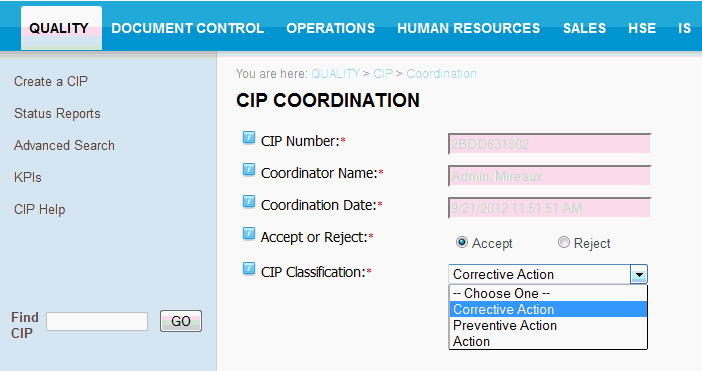No matter how much we try to meet the continual improvement requirements of the standard, when it comes to corrective action, there are times when we are not sure when to call an issue corrective action or not. Although there is no magic barometer to indicate yes or no this is a corrective action, I have a few simple rules to make your decision easier and a bit more clear.

“One-time issues tend to not be suitable for Corrective Action unless they are customer complaints or significantly affected quality”
When to generate Corrective Actions
Corrective Actions (or CIPs as they are called in our Web QMS) are best suited for systemic issues or issues that affect the quality of your products or services. One-time issues tend to not be suitable for Corrective Action unless they are customer complaints or the issue affected the quality of your products or services significantly.
Here are some examples of problem situations and my take on whether they should be deemed corrective actions (CIPs) or not:
- A form going from Planning to Shipping (i.e. packing list) was not filled out correctly: No.
- A form going to a customer (i.e. quote) was not filled out correctly but was later fixed: No.
- A form going to a customer (i.e. quote) was not filled out correctly but the order itself was entered correctly: No.
- A form going to a customer (i.e. quote) has not been filled out correctly the last 3 times: Yes.
- The customer complained once about a form (i.e. quote) not filled out correctly: Yes.
- A form going to a customer was not filled out correctly once and caused $1,000 dollars in expedite fees: Yes.
Take two
If you are pondering about examples 1, 2 and 3 above, you may not be alone. That’s because although they are not corrective actions, they are very good candidates for another entry in your continual improvement program: preventive actions, or perhaps NCRs. However, if you are limited in resources and you don’t have enough manpower to be chasing after one-time incidents then just make sure to talk to the people involved, discuss the issues, and act. If it happens again, then you know simple talk is not working in your company and you may need to change your strategy (i.e. create a CIP or Corrective Action) so that everyone becomes more accountable.
Hope this helps in your continual improvement journey. Remember continual improvement is not just about doing corrective actions for the sake of doing corrective actions; it is about doing thorough corrective actions so problems do not happen again.
Advance Your Knowledge with API and ISO Training from Mireaux University
Whether you’re preparing for certification or ready to take your team’s expertise to the next level, Mireaux training gives you the tools to succeed. Through Mireaux University (Mireaux-U) — our dynamic online learning platform — you can access course materials anytime, watch exclusive bonus videos, take your online exam, and download your certificate instantly. Experience expert-led training and real-world insights designed to empower your success. And link Mireaux University to this page:
ISO Training API Training




